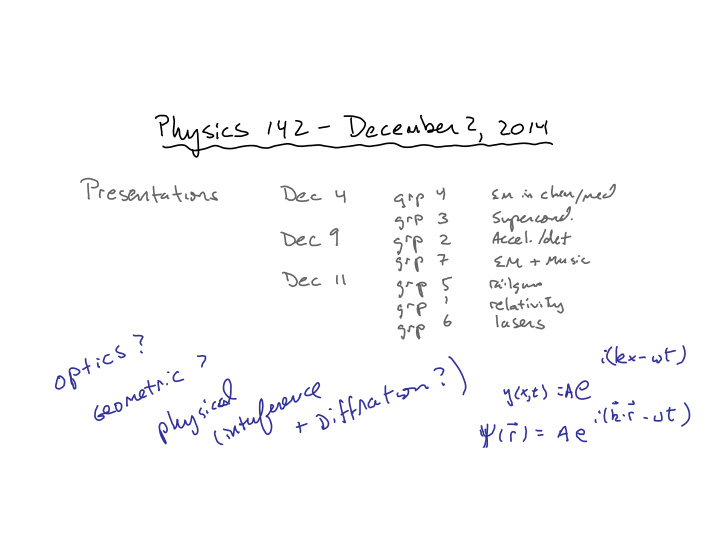



Thin lenses and optical instruments Physics 142 Fall 2014 - S. Manly References and photo sources: D. Giancoli, Physics for Scientists and Engineers, 3 rd ed., 2000, Prentice-Hall http://cvs.anu.edu.au (D. Denning and M. Kirk) http://www.ebiomedia.com 1
2
3
4
Power of lens measured in diopters 1 P where f is focal length in meters f Power is positive for converging lenses and negative for diverging lenses 5
Magnification: h d i i m h d o o Lens equation: 1 1 1 d d f o i 6
Real image: rays actually pass thru image Virtual image: rays do not actually pass thru image Sign convention is the tricky part, especially in multiple lens systems Convention from Giancoli p. 841: Focal length is + for converging lens and - for diverging lens Object distance is + if on the side of the lens from which the light is coming (usual, unless in multi-lens system) Image distance is + if on the opposite side of the lens from where the light is coming, if on same side, image distance is – Image distance is + for real images and – for virtual images Height of image is + if image is upright and – if image is inverted. Height of object is always taken to be +. 7
8
Aberrations Spherical aberration Chromatic aberration 9
10
Rayleigh scatt. Compton scatt. 11
12
13
14
A bee’s eye view 15
16
17
Anableps - minnow 18
Magnifying glass ' N m f 19
Refracting telescope 40 inch refractor – Yerkes Observatory 20
Reflecting telescope 21
22
Keck Observatory 23
Hubble Space Telescope 24
Compound microscope 25
Camera 26
Light vs. depth of field Shutter speed f-stop=f/D, each f-stop=factor of 2 in light intensity Faster the object or darker the day, need slower speed and/or larger D Larger D means narrower depth of field 27
28
29
30
Recommend
More recommend